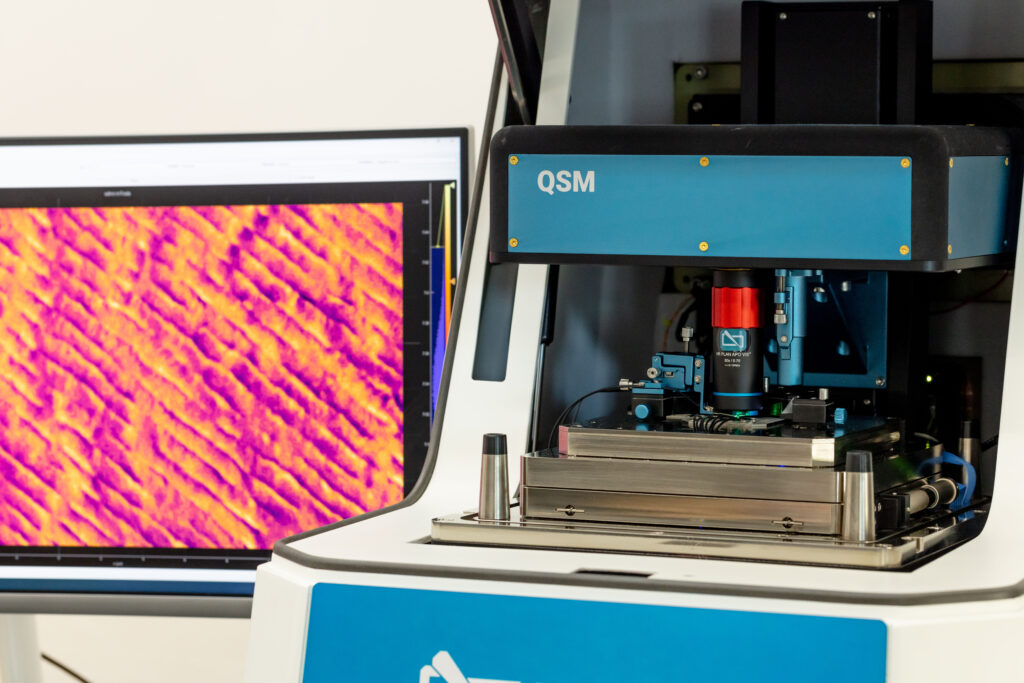QSM – Quantum Scanning Microscope
General Information
The QSM is a next-generation scanning probe magnetometer based on diamond technology. The diamond probes employ a single magnetic impurity in the carbon lattice (Nitrogen-vacancy center) as an atomic-size magnetic quantum sensor. The QSM combines uT sensitivity with a magnetic spatial resolution of tens of nm. Exploiting the principles of quantum metrology, the QSM provides unmatched performance in high resolution and quantitative magnetic analysis of antiferromagnets, magnons, skyrmions, cycloids as well as surface current densities.

Tecnical description
The QSM integrates all the capabilities of an NV scanning probe in a turnkey instrument offering a modern and intuitive user interface that enables the user to have a quick start into the world of magnetic and current imaging. The QSM is a scanning magnetometer with nominal spatial resolution of 10 nm and magnetic sensitivity better than 1uT/sqrt(Hz). It incorporates a commercial AFM system to allow correlative magnetic measurements at the nanometer scale. At the core of our instrument is a revolutionary probe made out of highly purified diamond in which a single Nitrogen-Vacancy (NV) center acting as a magnetic sensor is located at the apex of a scanning pillar, allowing to correlate topographic signals with magnetism from a sample surface. The microscope incorporates the following imaging techniques: scanning NV microscopy, confocal microscopy, AFM, MOKE imaging, widefield microscope. When operated in NV mode, it can be used to map out quantitatively surface magnetization, surface current density, surface chemical potential. In addition, due to the atomic size of the NV defect, the scanning probe has no magnetic back action on the sample surface, allowing for non-invasive measurements.
Research areas and applications
Antiferromagnets, ferromagnets, skyrmions, cycloids, vortices, failure analysis, geology, inspection of ion traps and other devices
Science highlights


